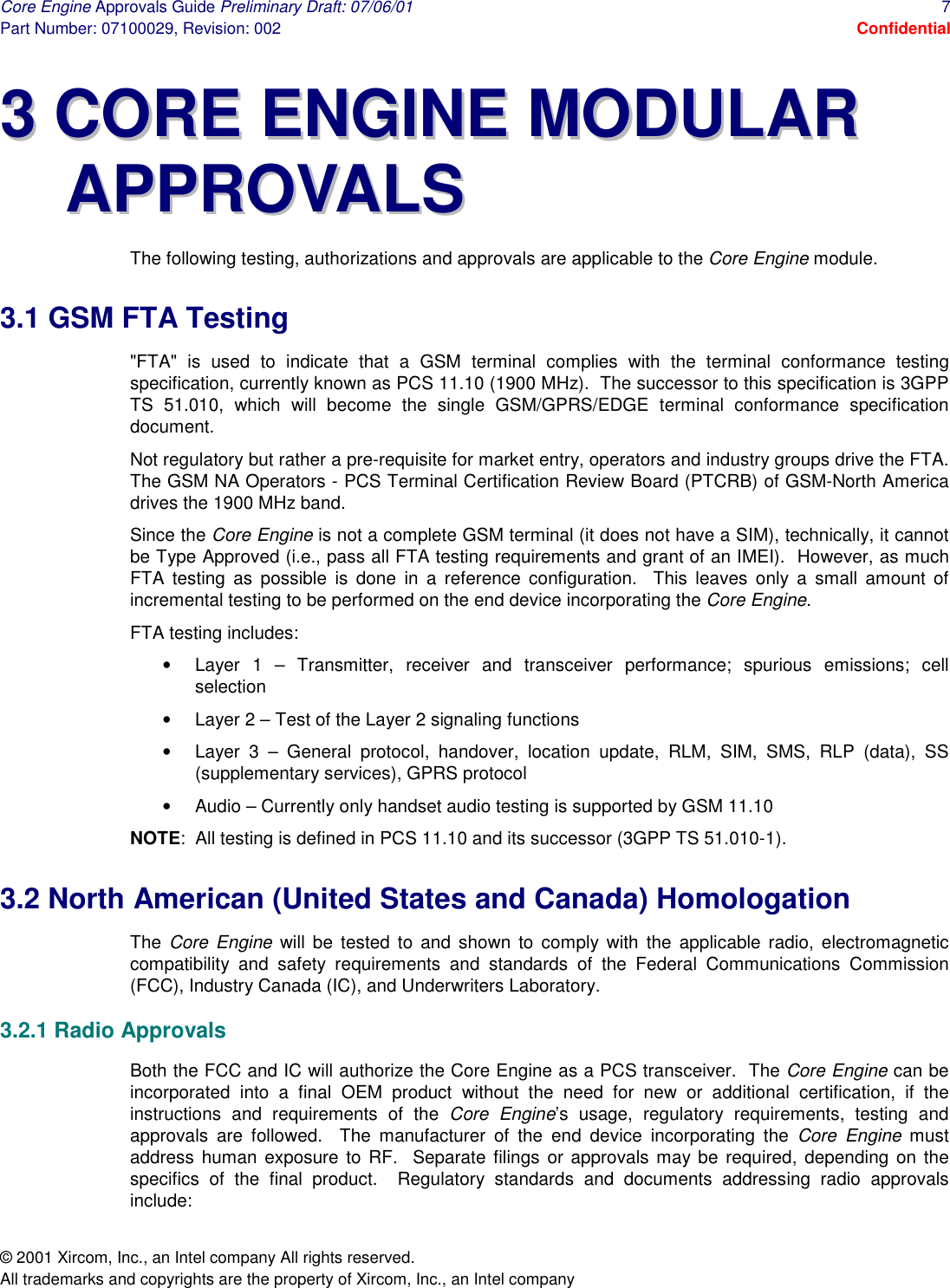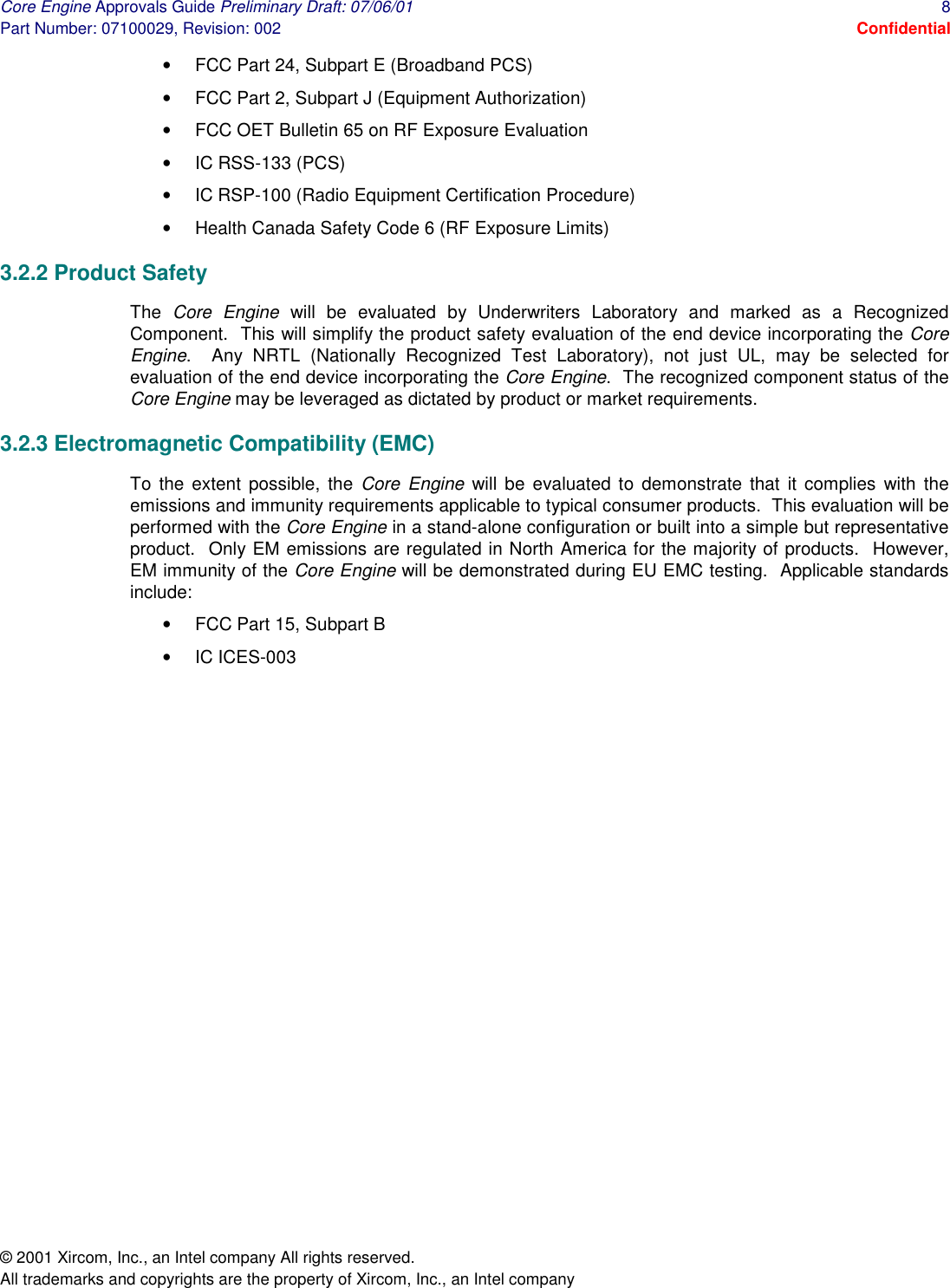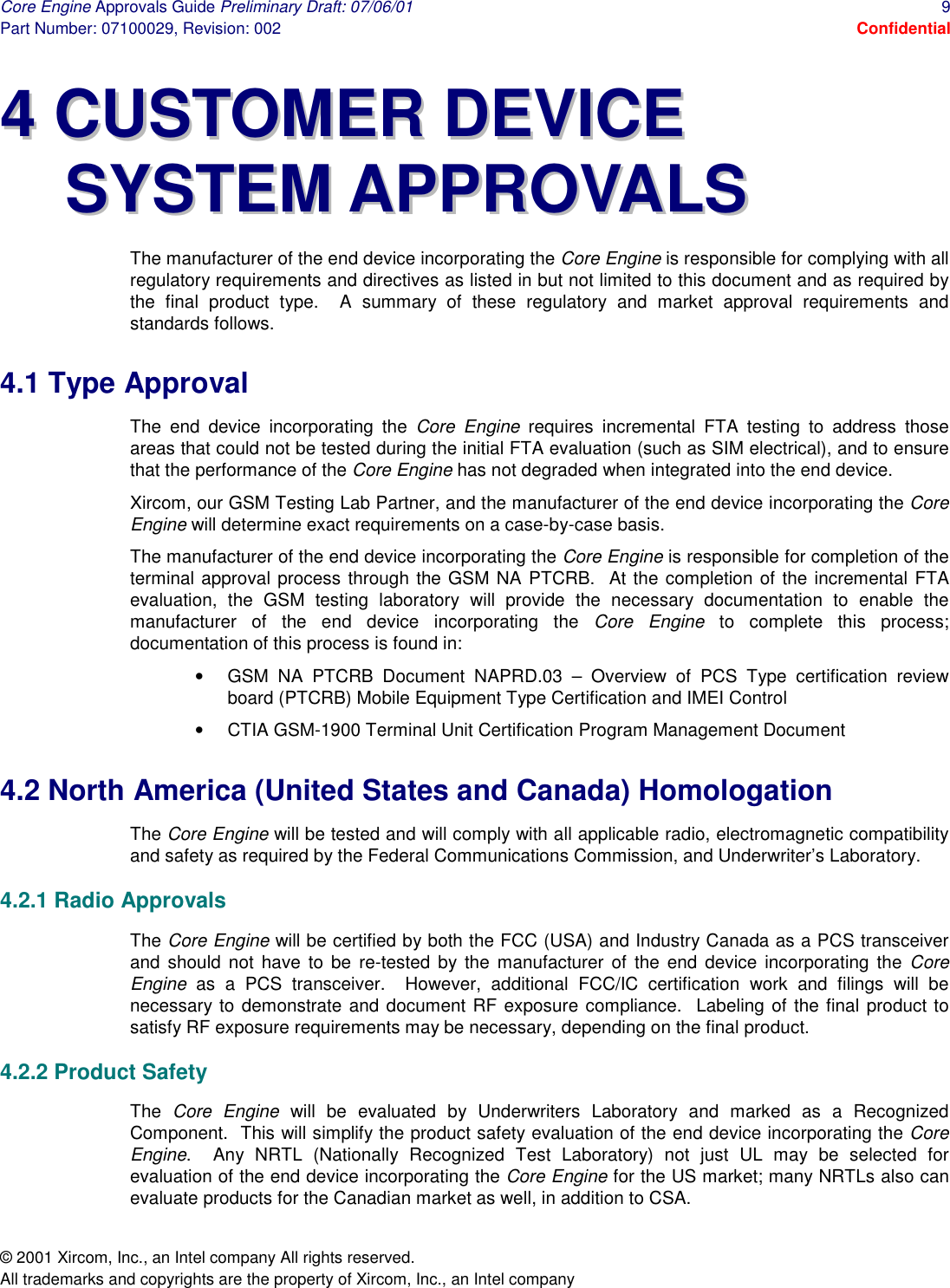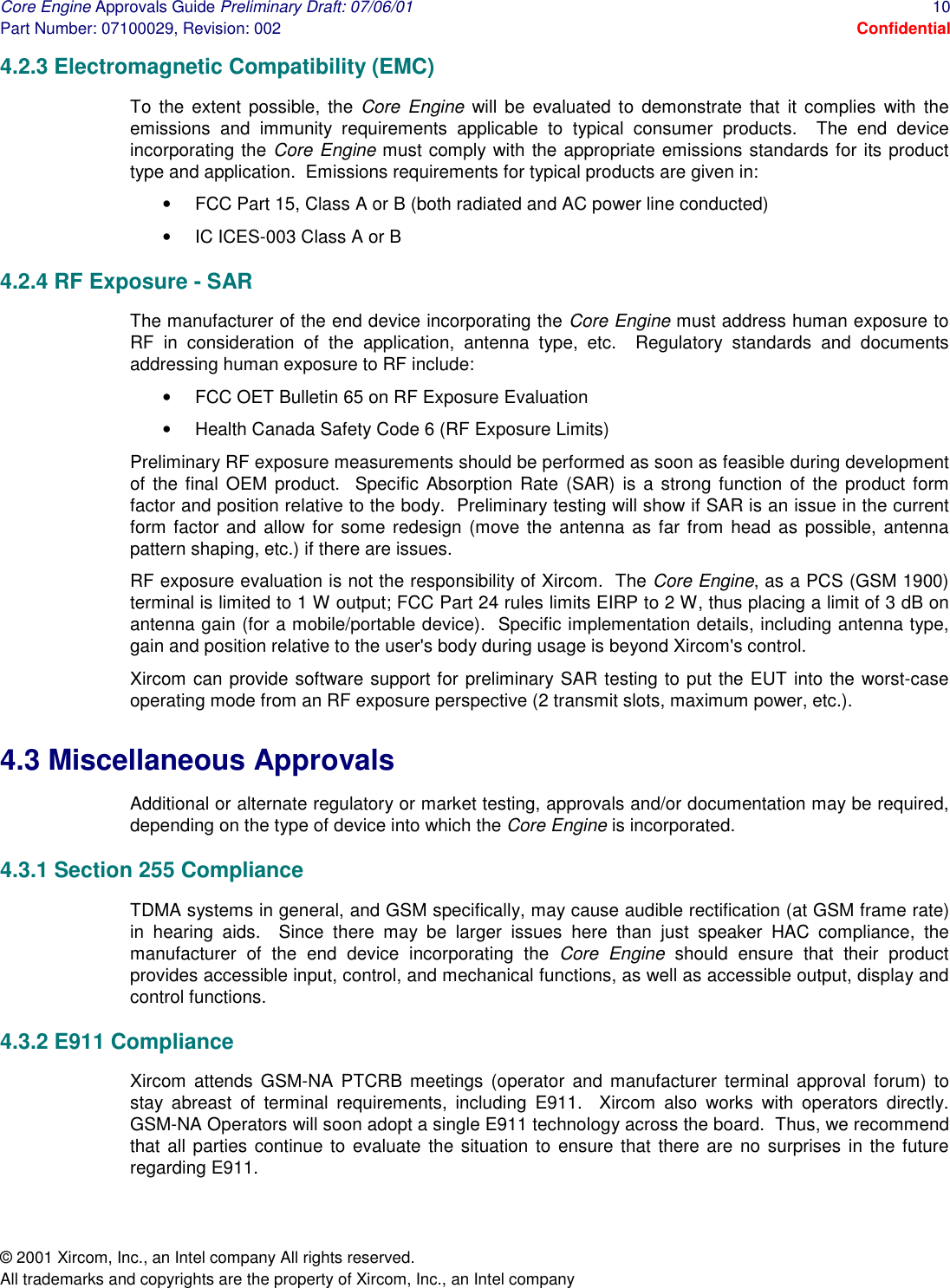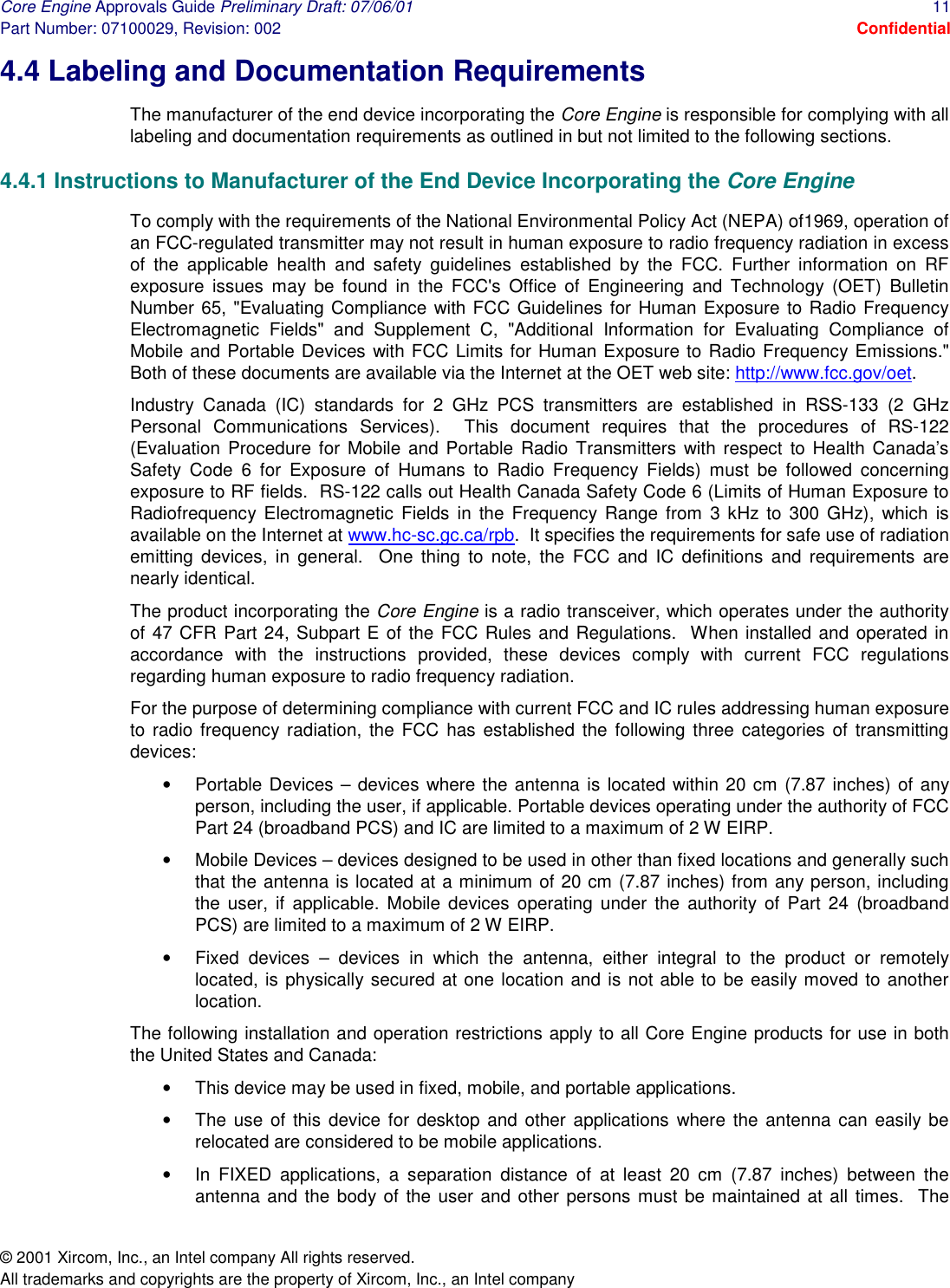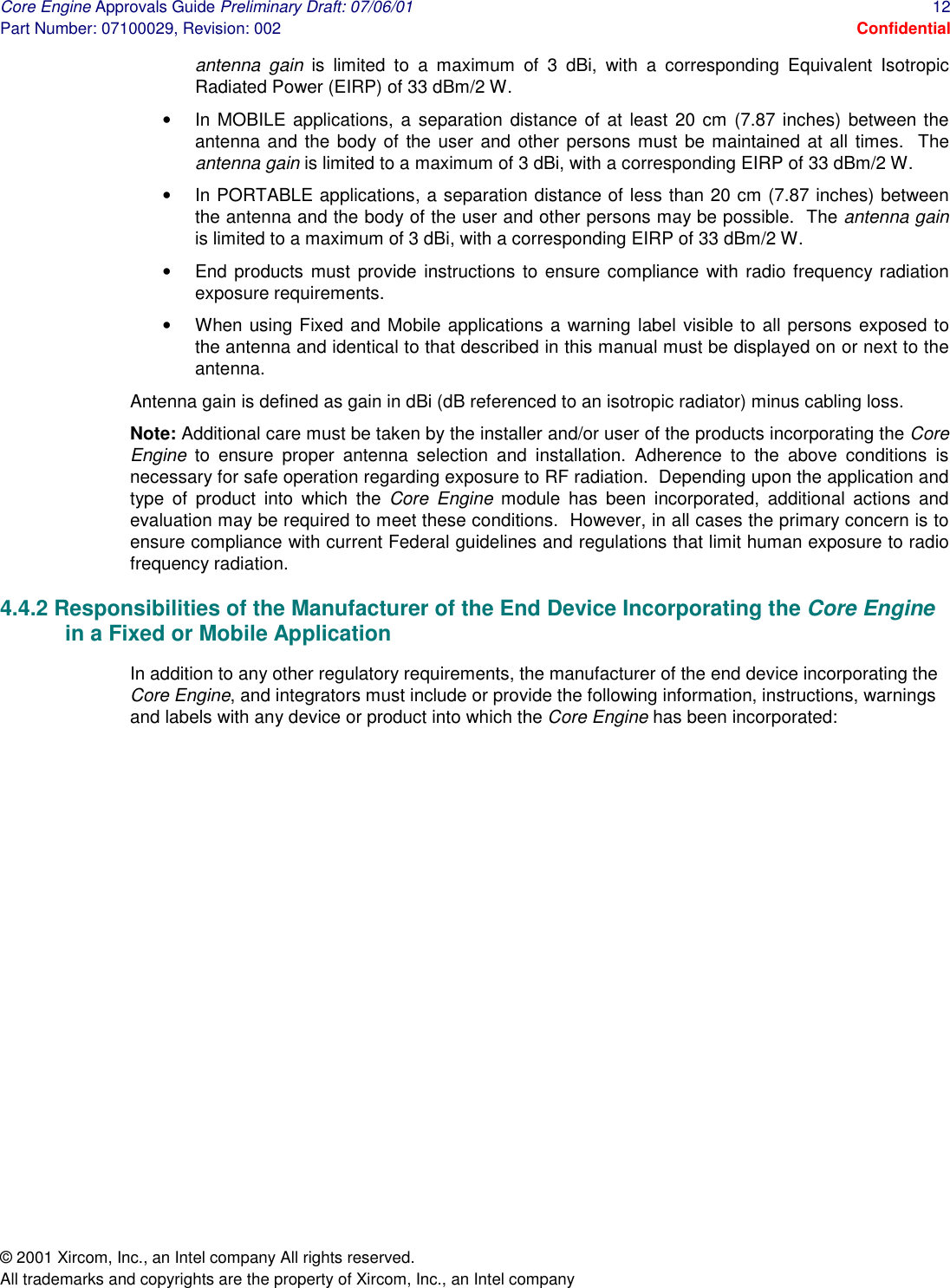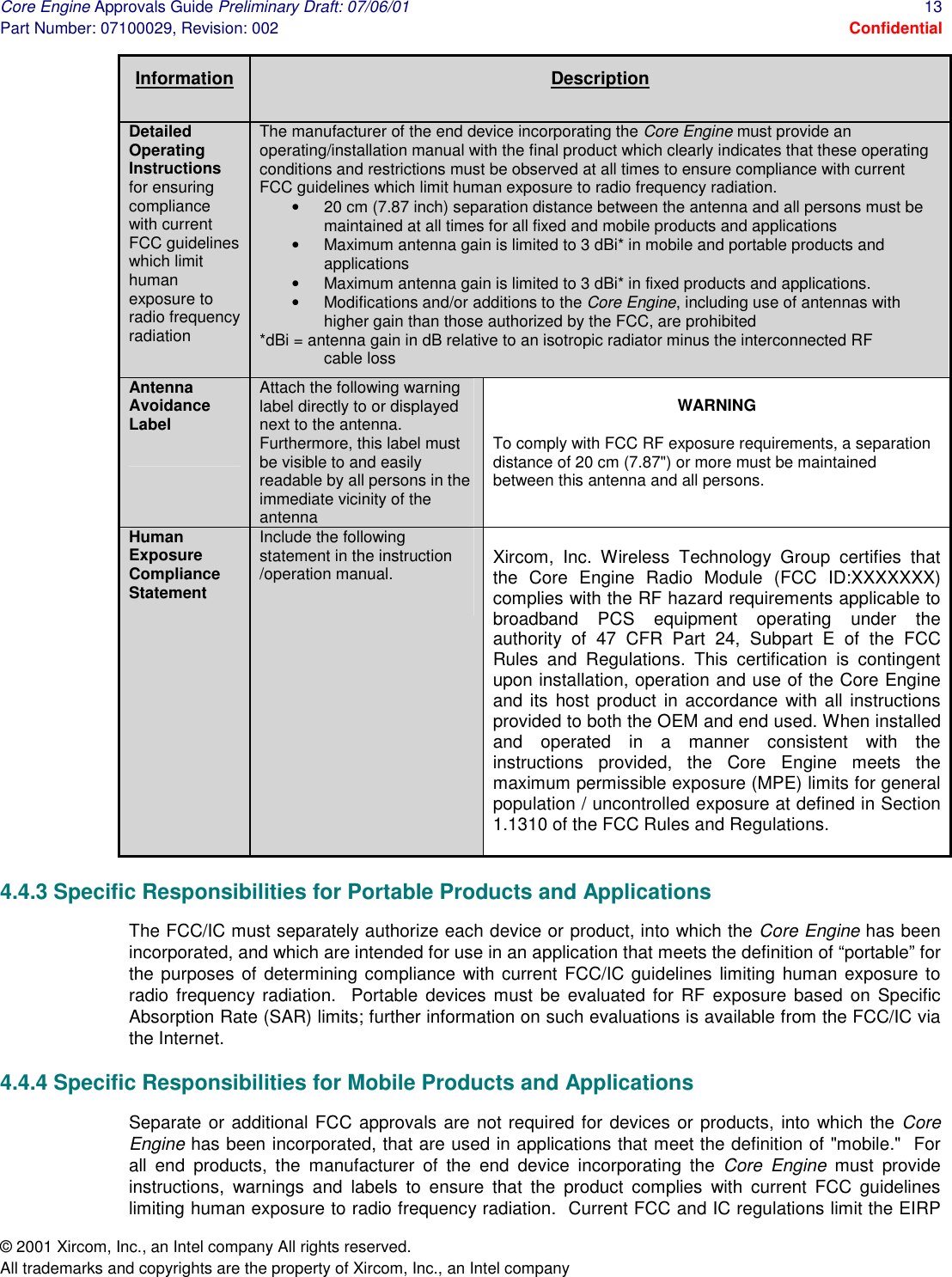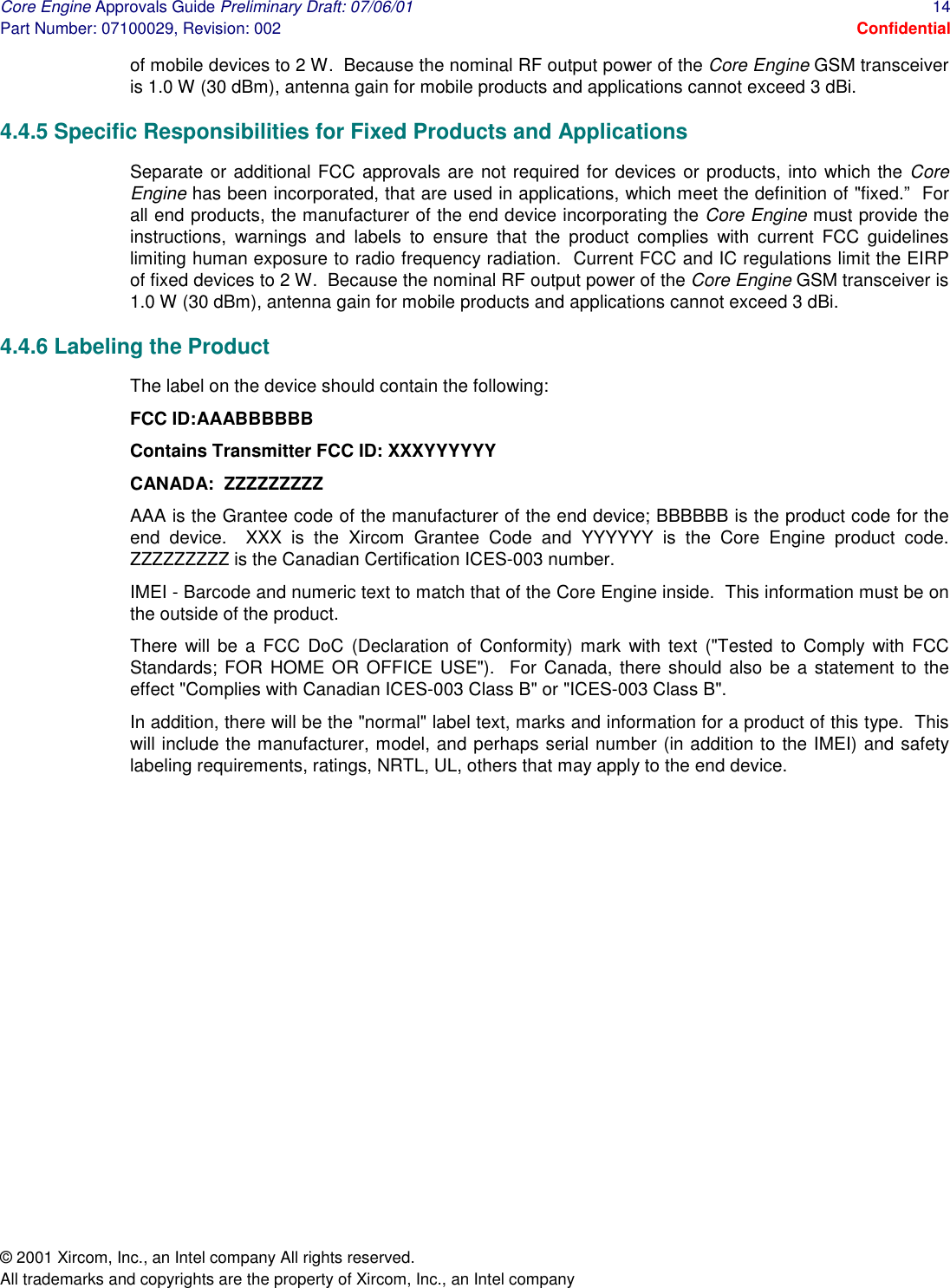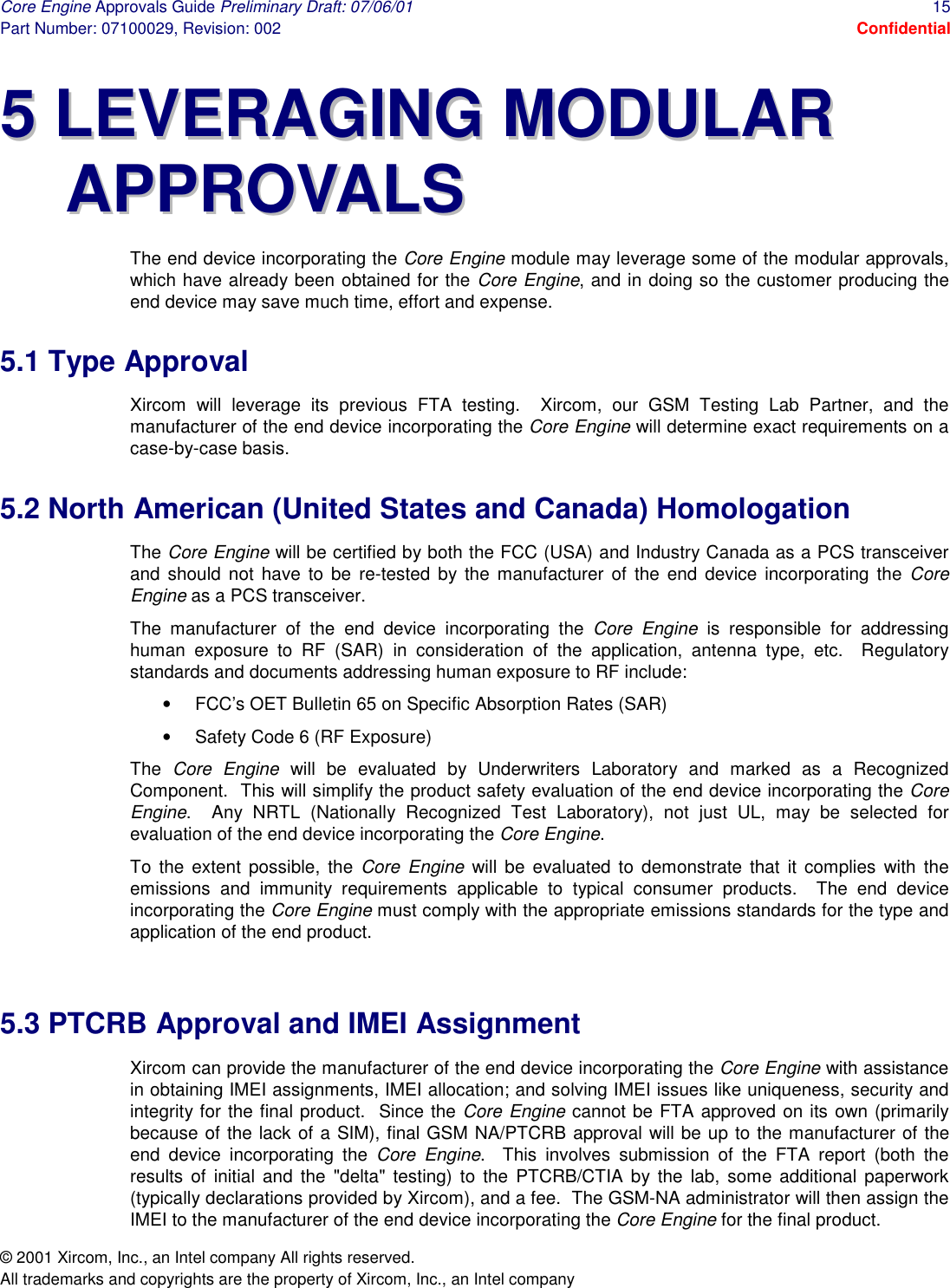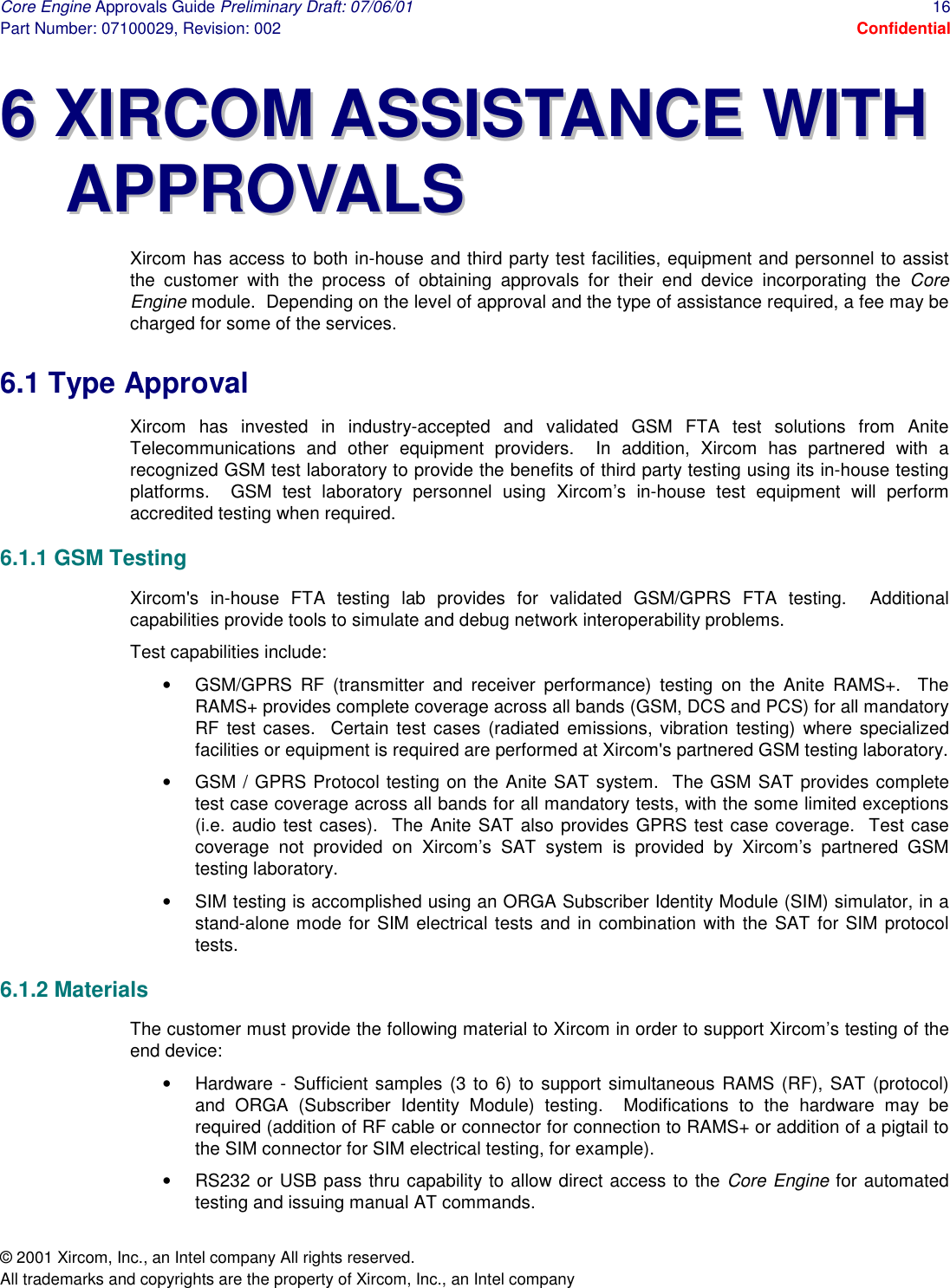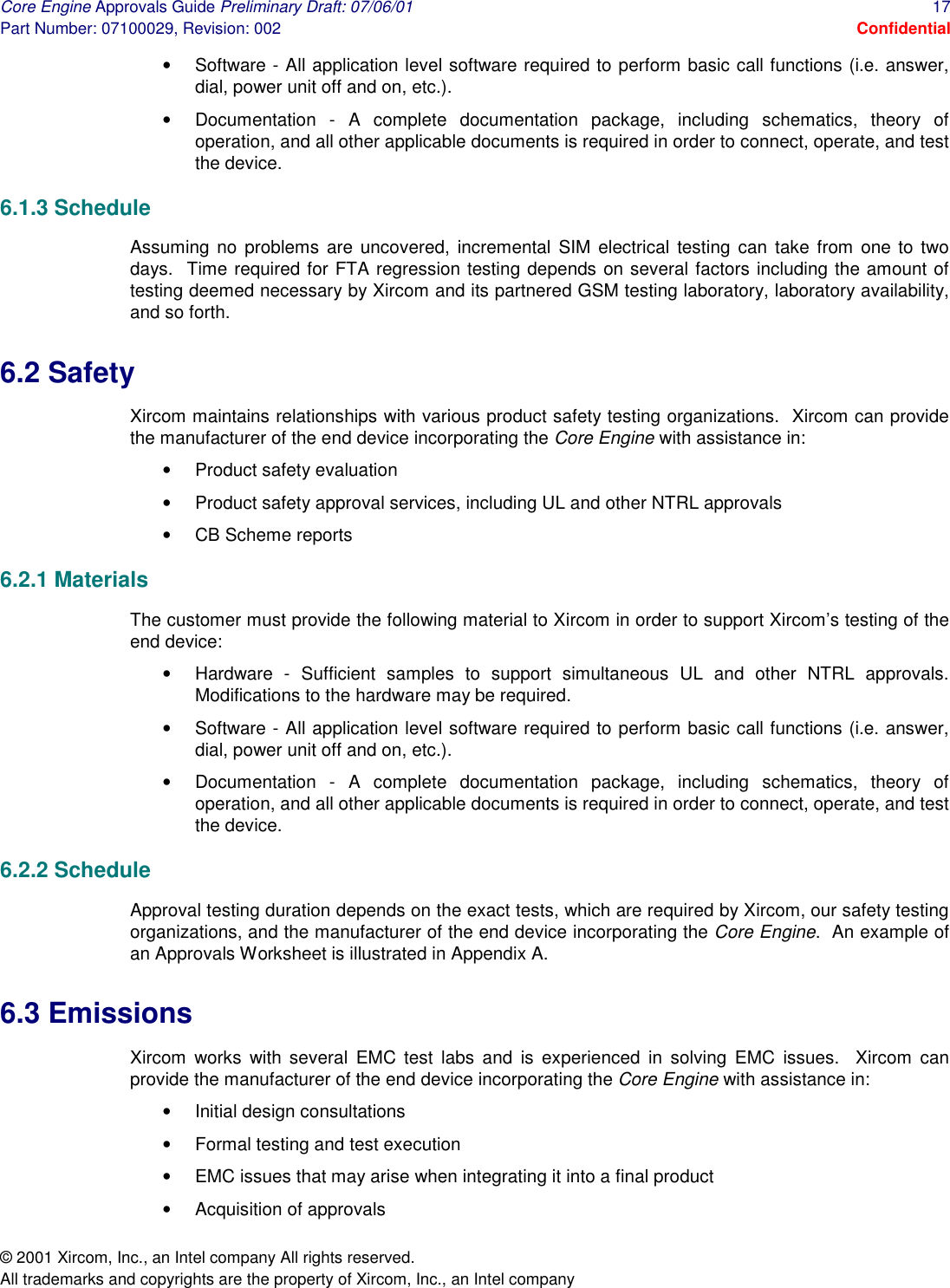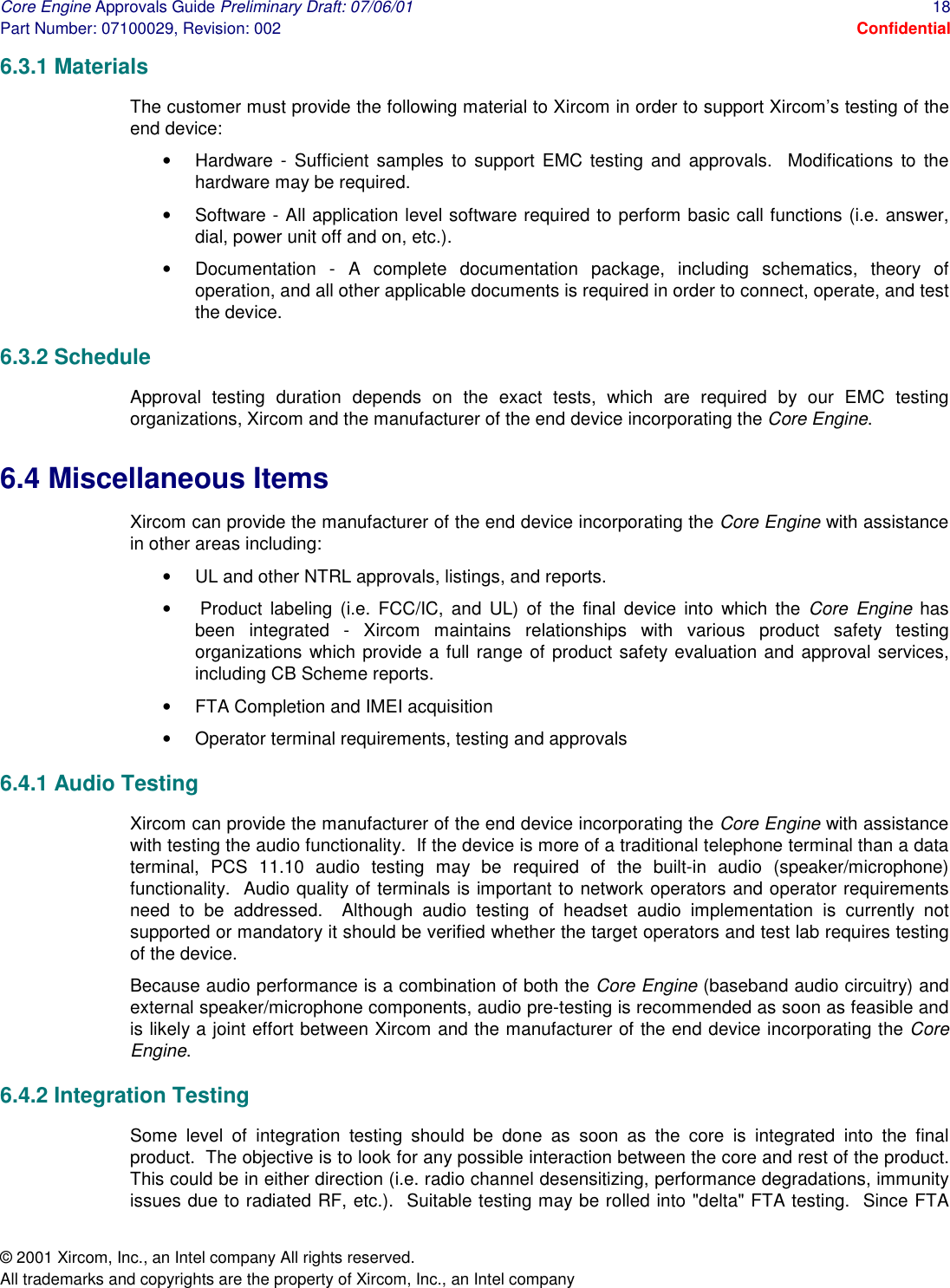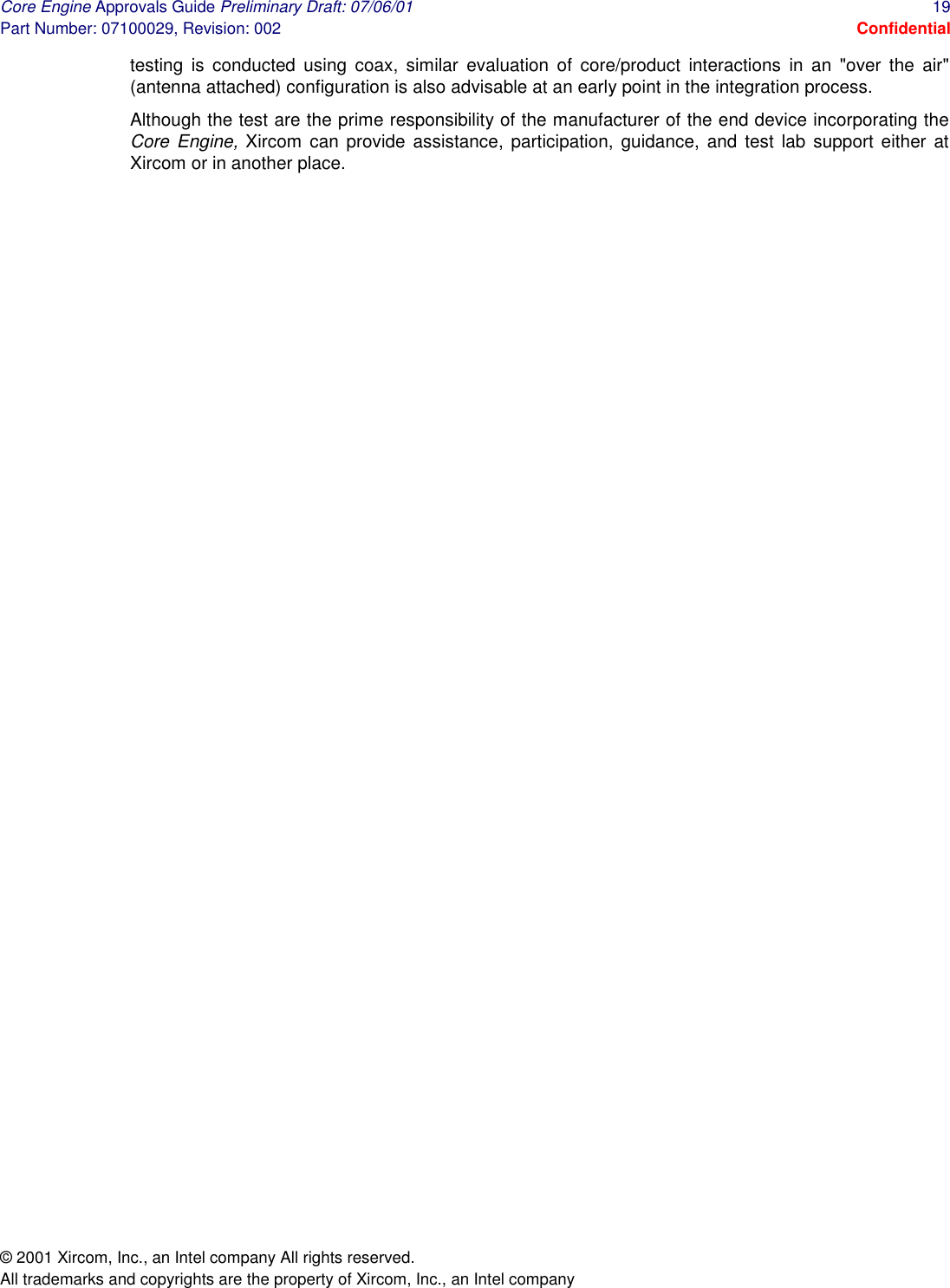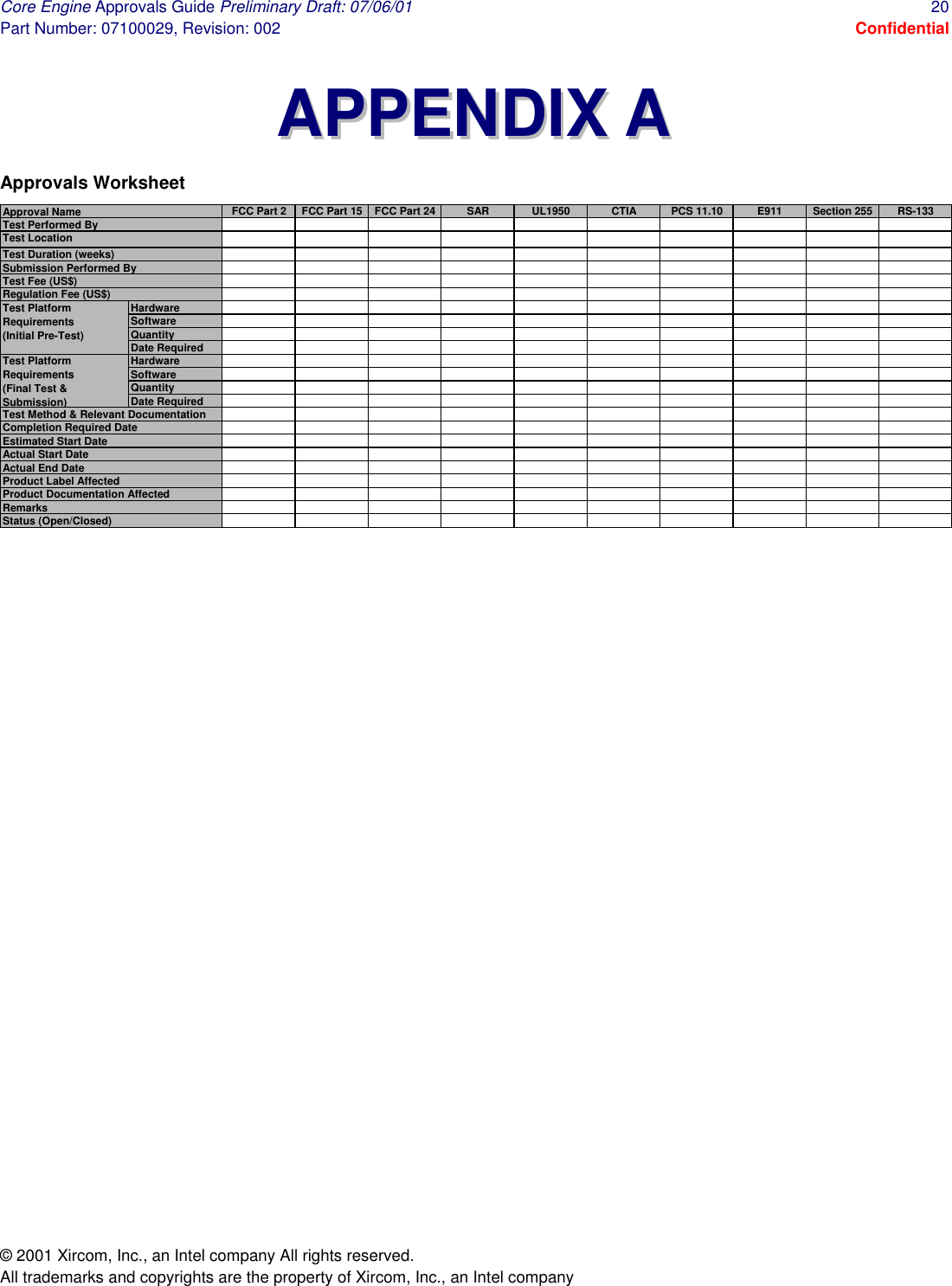Xircom An Intel GEM3501 Core Engine, PCS-1900 GSM Radio Module User Manual Core Engine XGAP Specification
Xircom, An Intel Company Core Engine, PCS-1900 GSM Radio Module Core Engine XGAP Specification
Contents
- 1. Core Engine Approvals Guide
- 2. Core Engine Developers Guide
Core Engine Approvals Guide
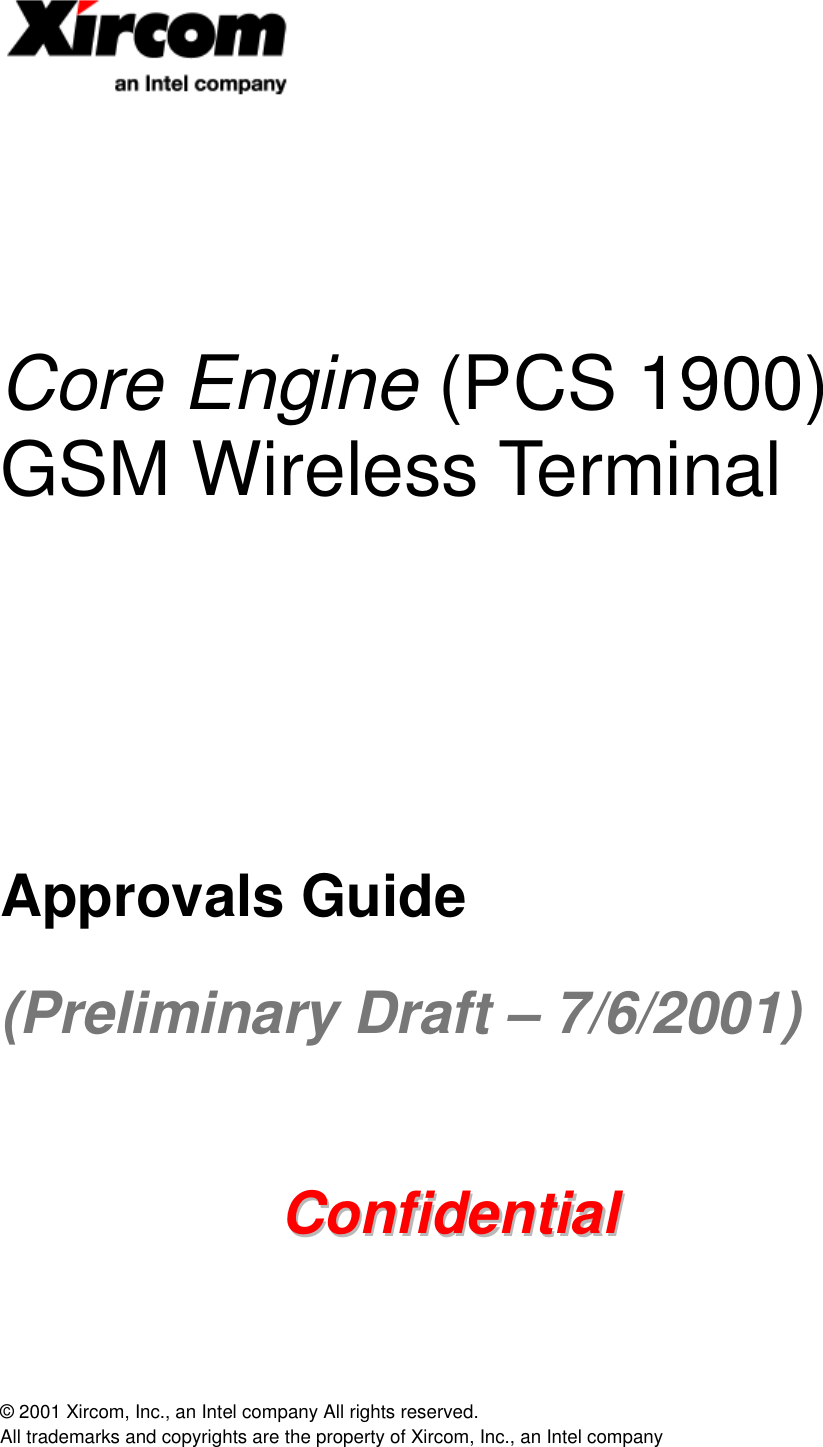
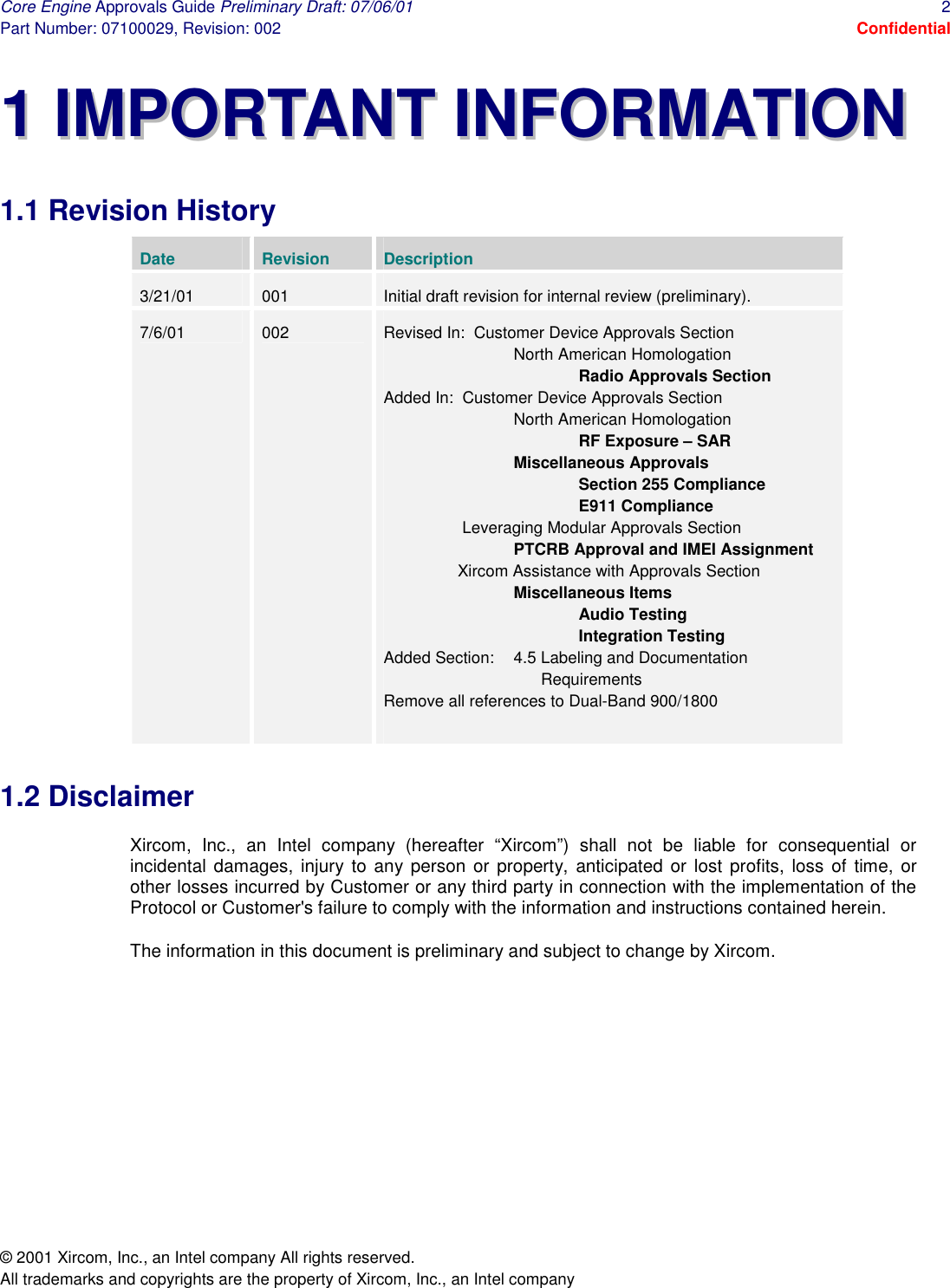
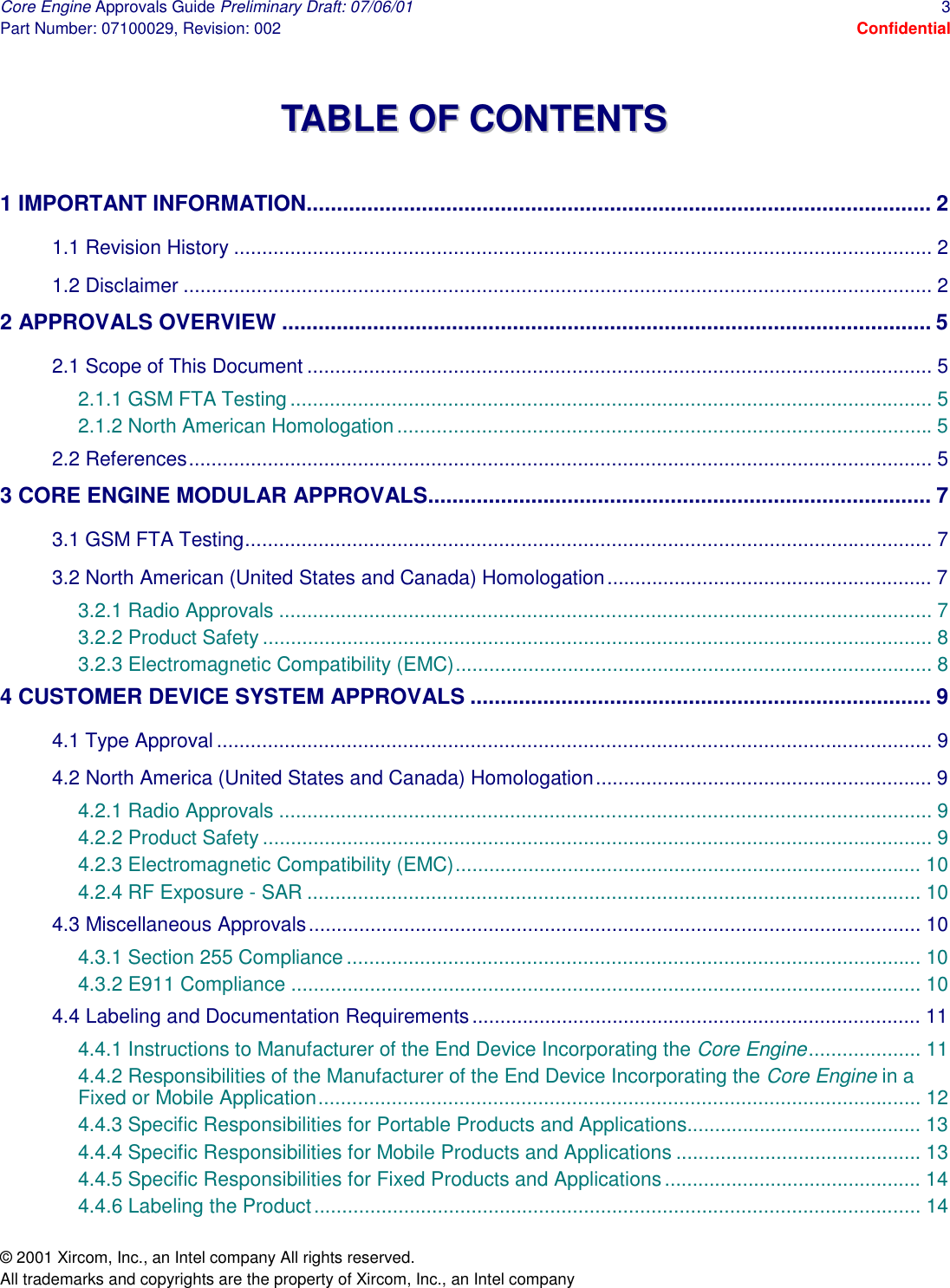
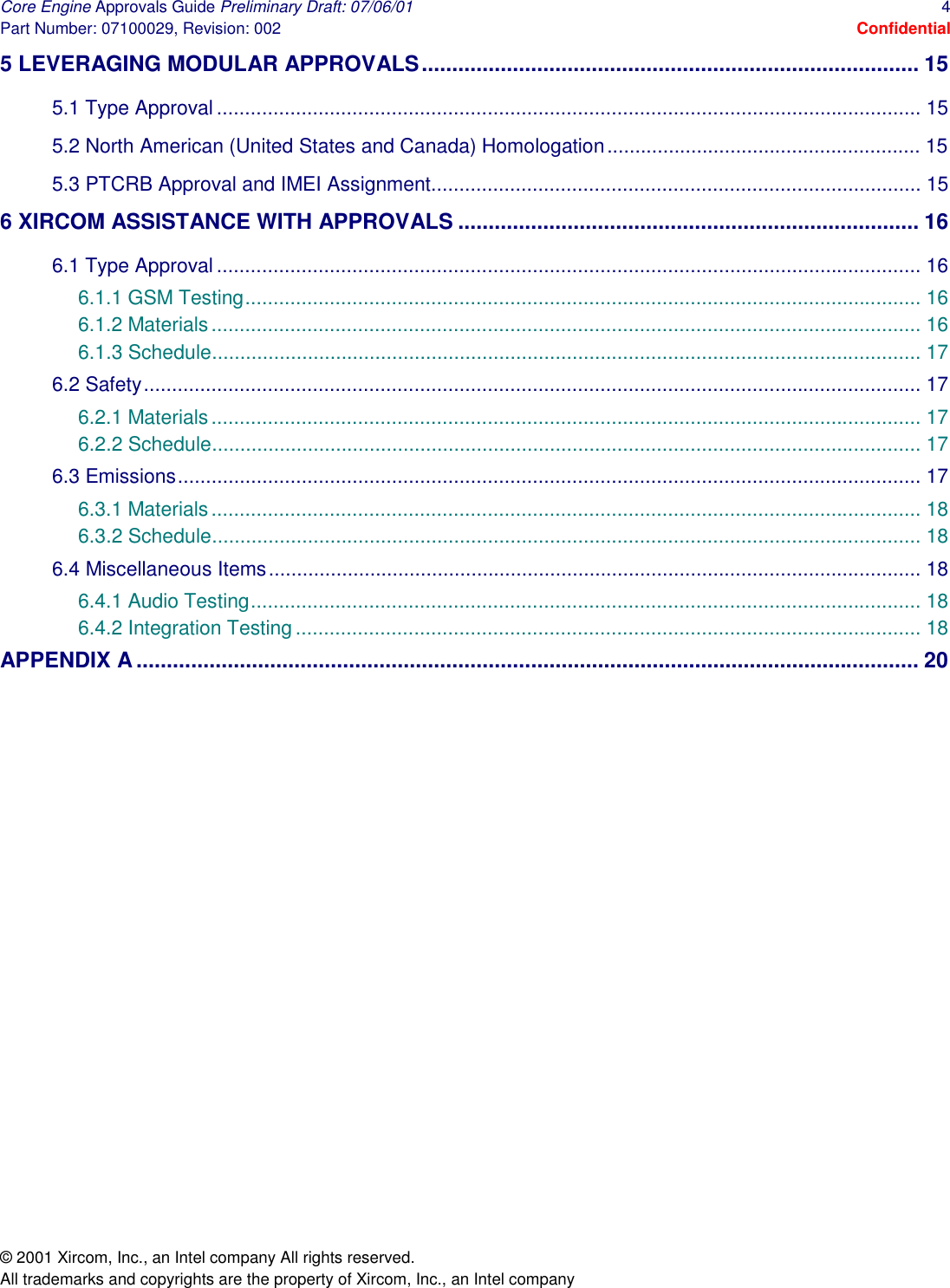
![Core Engine Approvals Guide Preliminary Draft: 07/06/01 5 Part Number: 07100029, Revision: 002 Confidential © 2001 Xircom, Inc., an Intel company All rights reserved. All trademarks and copyrights are the property of Xircom, Inc., an Intel company 2 AAPPPPRROOVVAALLSS OOVVEERRVVIIEEWW The responsibility for an overall compliant product, per world wide regulatory standards, rests with the Core Engine customer who incorporates the Core Engine into their device. Currently some countries allow for a modular approval. This allows the Core Engine module to be used in numerous products without testing and submitting the Core Engine module portion again for certification. Some countries do not allow this and will require every product that the Core Engine is integrated into to be tested and certified on it’s own. 2.1 Scope of This Document The goal of this document is to provide a guidance note for our customers to help them better understand the process that is required to incorporate the Core Engine module into their custom device. This document describes the approvals (agency, safety and emissions) that have been obtained by Xircom for the Core Engine module, as well as those, which must be obtained for any end user device incorporating a Core Engine module. 2.1.1 GSM FTA Testing Full Type Approval (FTA) testing is not regulatory but rather a pre-requisite for market entry. It is used to indicate that a GSM terminal complies with the terminal conformance testing specification, currently known as: • PCS 11.10 (1900 MHz) • 3GPP TS 51.010-1 (Successor to PCS 11.10) 2.1.2 North American Homologation Within North America (United States and Canada), Core Engine regulatory approvals are required in the following areas to meet the requirements of the Federal Communications Commission (FCC in the United States) and of Industry Canada (IC in Canada): • Radio Authorization (FCC and IC Certification) • EMC (emissions only) In addition, product safety evaluation, approval and marking of any product incorporating the Core Engine are required. Such approvals can be obtained from approved agencies in the United States and Canada, including (but not limited to): • Underwriters Laboratories • Canadian Standards Association 2.2 References [1] PCS 11.10 for 1900MHz Specification [2] 3GPP TS 51.010-1](https://usermanual.wiki/Xircom-An-Intel/GEM3501.Core-Engine-Approvals-Guide/User-Guide-167160-Page-5.png)
![Core Engine Approvals Guide Preliminary Draft: 07/06/01 6 Part Number: 07100029, Revision: 002 Confidential © 2001 Xircom, Inc., an Intel company All rights reserved. All trademarks and copyrights are the property of Xircom, Inc., an Intel company [3] FCC’s OET Bulletin 65 on Specific Absorption Rates (SAR) [4] FCC Part 15, Subpart B [5] FCC Part 24, Subpart E (Broadband PCS) [6] FCC Part 2, Subpart J (Equipment Authorization) [7] UL 1950 [8] Canadian RSS-133 (PCS) [9] RS-122 (Radio Certification Procedure) [10] Safety Code 6 (RF Exposure) [11] Canada ICES-003](https://usermanual.wiki/Xircom-An-Intel/GEM3501.Core-Engine-Approvals-Guide/User-Guide-167160-Page-6.png)
